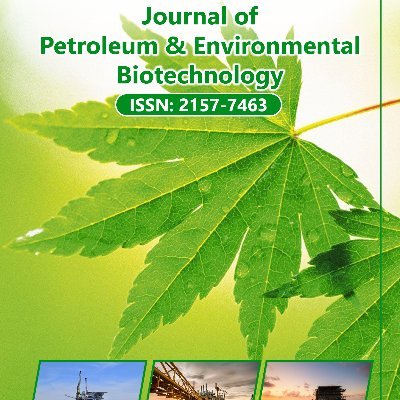–Ш–љ–і–µ–Ї—Б–Є—А–Њ–≤–∞–љ–Њ –≤
- Open J Gate
- –Ц—Г—А–љ–∞–ї GenamicsSeek
- –Ц—Г—А–љ–∞–їTOCs
- –Ъ–Є—В–∞–є—Б–Ї–∞—П –љ–∞—Ж–Є–Њ–љ–∞–ї—М–љ–∞—П –Є–љ—Д—А–∞—Б—В—А—Г–Ї—В—Г—А–∞ –Ј–љ–∞–љ–Є–є (CNKI)
- –С–Є–±–ї–Є–Њ—В–µ–Ї–∞ —Н–ї–µ–Ї—В—А–Њ–љ–љ—Л—Е –ґ—Г—А–љ–∞–ї–Њ–≤
- RefSeek
- –£–љ–Є–≤–µ—А—Б–Є—В–µ—В –•–∞–Љ–і–∞—А–і–∞
- –≠–С–°–Ъ–Ю –Р–Ч
- OCLC- WorldCat
- –Ш–љ—В–µ—А–љ–µ—В-–Ї–∞—В–∞–ї–Њ–≥ SWB
- –Т–Є—А—В—Г–∞–ї—М–љ–∞—П –±–Є–Њ–ї–Њ–≥–Є—З–µ—Б–Ї–∞—П –±–Є–±–ї–Є–Њ—В–µ–Ї–∞ (–≤–Є—Д–∞–±–Є–Њ)
- –Я–∞–±–ї–Њ–љ—Л
- –Ь–Ш–Р–†
- –Х–≤—А–Њ –Я–∞–±
- Google Scholar
–Я–Њ–ї–µ–Ј–љ—Л–µ —Б—Б—Л–ї–Ї–Є
–Я–Њ–і–µ–ї–Є—В—М—Б—П —Н—В–Њ–є —Б—В—А–∞–љ–Є—Ж–µ–є
–§–ї–∞–µ—А –ґ—Г—А–љ–∞–ї–∞

–Ц—Г—А–љ–∞–ї—Л –Њ—В–Ї—А—Л—В–Њ–≥–Њ –і–Њ—Б—В—Г–њ–∞
- –С–Є–Њ–Є–љ—Д–Њ—А–Љ–∞—В–Є–Ї–∞ –Є —Б–Є—Б—В–µ–Љ–љ–∞—П –±–Є–Њ–ї–Њ–≥–Є—П
- –С–Є–Њ—Е–Є–Љ–Є—П
- –Т–µ—В–µ—А–Є–љ–∞—А–љ—Л–µ –љ–∞—Г–Ї–Є
- –У–µ–љ–µ—В–Є–Ї–∞ –Є –Љ–Њ–ї–µ–Ї—Г–ї—П—А–љ–∞—П –±–Є–Њ–ї–Њ–≥–Є—П
- –Х–і–∞ –Є –њ–Є—В–∞–љ–Є–µ
- –Ш–Љ–Љ—Г–љ–Њ–ї–Њ–≥–Є—П –Є –Љ–Є–Ї—А–Њ–±–Є–Њ–ї–Њ–≥–Є—П
- –Ш–љ–ґ–Є–љ–Є—А–Є–љ–≥
- –Ъ–ї–Є–љ–Є—З–µ—Б–Ї–Є–µ –љ–∞—Г–Ї–Є
- –Ь–∞—В–µ—А–Є–∞–ї–Њ–≤–µ–і–µ–љ–Є–µ
- –Љ–µ–і–Є—Ж–Є–љ—Б–Ї–Є–µ –љ–∞—Г–Ї–Є
- –Э–∞—Г–Ї–Є –Њ–± –Њ–Ї—А—Г–ґ–∞—О—Й–µ–є —Б—А–µ–і–µ
- –Э–µ–≤—А–Њ–ї–Њ–≥–Є—П –Є –њ—Б–Є—Е–Њ–ї–Њ–≥–Є—П
- –Ю–±—Й–∞—П –љ–∞—Г–Ї–∞
- –°–µ–ї—М—Б–Ї–Њ–µ —Е–Њ–Ј—П–є—Б—В–≤–Њ –Є –∞–Ї–≤–∞–Ї—Г–ї—М—В—Г—А–∞
- –°–µ—Б—В—А–Є–љ—Б–Ї–Њ–µ –і–µ–ї–Њ –Є –Ј–і—А–∞–≤–Њ–Њ—Е—А–∞–љ–µ–љ–Є–µ
- –£–њ—А–∞–≤–ї–µ–љ–Є–µ –±–Є–Ј–љ–µ—Б–Њ–Љ
- –§–∞—А–Љ–∞—Ж–µ–≤—В–Є—З–µ—Б–Ї–Є–µ –љ–∞—Г–Ї–Є
- –•–Є–Љ–Є—П
–Р–±—Б—В—А–∞–Ї—В–љ—Л–є
–Э–Њ–≤—Л–є —А–∞–±–Њ—З–Є–є –њ—А–Њ—Ж–µ—Б—Б –Є—Б–њ–Њ–ї—М–Ј–Њ–≤–∞–љ–Є—П –≥–Є–±–Ї–Њ–є —В—А—Г–±—Л —Б –Њ–њ—В–Њ–≤–Њ–ї–Њ–Ї–Њ–љ–љ–Њ–є —В–µ–ї–µ–Љ–µ—В—А–Є–µ–є –њ—А–Є –≤—Л–±–Њ—А–µ –Ї–∞–љ–і–Є–і–∞—В–Њ–≤
–Р—Е–Љ–µ–і –≠–ї—М-–Р—В—В–∞—А
–Я–Њ–≤—А–µ–ґ–і–µ–љ–Є–µ –њ–ї–∞—Б—В–∞ —П–≤–ї—П–µ—В—Б—П –љ–µ–ґ–µ–ї–∞—В–µ–ї—М–љ–Њ–є —Н–Ї—Б–њ–ї—Г–∞—В–∞—Ж–Є–Њ–љ–љ–Њ–є –Є —Н–Ї–Њ–љ–Њ–Љ–Є—З–µ—Б–Ї–Њ–є –њ—А–Њ–±–ї–µ–Љ–Њ–є, –Ї–Њ—В–Њ—А–∞—П –Љ–Њ–ґ–µ—В –≤–Њ–Ј–љ–Є–Ї–љ—Г—В—М –љ–∞ –њ—А–Њ—В—П–ґ–µ–љ–Є–Є –≤—Б–µ–≥–Њ –ґ–Є–Ј–љ–µ–љ–љ–Њ–≥–Њ —Ж–Є–Ї–ї–∞ –љ–µ—Д—В—П–љ—Л—Е –Є –≥–∞–Ј–Њ–≤—Л—Е —Б–Ї–≤–∞–ґ–Є–љ –Є–Ј-–Ј–∞ –љ–µ—Б–Ї–Њ–ї—М–Ї–Є—Е –њ—А–Є—З–Є–љ, —В–∞–Ї–Є—Е –Ї–∞–Ї –Є—Б–њ–Њ–ї—М–Ј–Њ–≤–∞–љ–Є–µ –љ–µ—Б–Њ–≤–Љ–µ—Б—В–Є–Љ—Л—Е –ґ–Є–і–Ї–Њ—Б—В–µ–є –≤–Њ –≤—А–µ–Љ—П –Њ–њ–µ—А–∞—Ж–Є–є –њ–Њ —А–µ–Љ–Њ–љ—В—Г —Б–Ї–≤–∞–ґ–Є–љ, –Љ–Є–≥—А–∞—Ж–Є—П –Љ–µ–ї–Ї–Є—Е —З–∞—Б—В–Є—Ж, –љ–∞–±—Г—Е–∞–љ–Є–µ –≥–ї–Є–љ—Л, –Њ–±—А–∞–Ј–Њ–≤–∞–љ–Є–µ —Н–Љ—Г–ї—М—Б–Є–є, –∞ —В–∞–Ї–ґ–µ –Њ—В–ї–Њ–ґ–µ–љ–Є—П —Б–Њ–ї–µ–є –Є –Њ—А–≥–∞–љ–Є—З–µ—Б–Ї–Є—Е –≤–µ—Й–µ—Б—В–≤. –Ъ—А–Њ–Љ–µ —В–Њ–≥–Њ, –љ–µ–і–∞–≤–љ–Њ –њ—А–Њ–±—Г—А–µ–љ–љ—Л–µ —Б–Ї–≤–∞–ґ–Є–љ—Л –Є–љ–Њ–≥–і–∞ –љ–µ —А–∞–±–Њ—В–∞—О—В –Њ–њ—В–Є–Љ–∞–ї—М–љ–Њ –Є–Ј-–Ј–∞ –њ–Њ–≤—А–µ–ґ–і–µ–љ–Є–є, –≤—Л–Ј–≤–∞–љ–љ—Л—Е –±—Г—А–Њ–≤—Л–Љ–Є —А–∞—Б—В–≤–Њ—А–∞–Љ–Є. –Я–Њ—Н—В–Њ–Љ—Г –і–ї—П —А–µ—И–µ–љ–Є—П –њ—А–Њ–±–ї–µ–Љ –њ–Њ–≤—А–µ–ґ–і–µ–љ–Є—П –њ–ї–∞—Б—В–∞ —Б —Ж–µ–ї—М—О –Њ–±–µ—Б–њ–µ—З–µ–љ–Є—П –Њ–њ—В–Є–Љ–∞–ї—М–љ–Њ–≥–Њ –Є–Ј–≤–ї–µ—З–µ–љ–Є—П —Г–≥–ї–µ–≤–Њ–і–Њ—А–Њ–і–Њ–≤ –љ–µ–Њ–±—Е–Њ–і–Є–Љ–Њ –њ—А–Є–ї–Њ–ґ–Є—В—М –±–Њ–ї—М—И–µ —Г—Б–Є–ї–Є–є –і–ї—П –≤—Л—П–≤–ї–µ–љ–Є—П –Љ–µ—Е–∞–љ–Є–Ј–Љ–∞ –њ–Њ–≤—А–µ–ґ–і–µ–љ–Є—П –Є –Ї–Њ–ї–Є—З–µ—Б—В–≤–µ–љ–љ–Њ–є –Њ—Ж–µ–љ–Ї–Є —Б–Ї–Є–љ-—Д–∞–Ї—В–Њ—А–∞. –°–Ї–Є–љ-—Д–∞–Ї—В–Њ—А — —Н—В–Њ –±–µ–Ј—А–∞–Ј–Љ–µ—А–љ–Њ–µ —З–Є—Б–ї–Њ, –Ї–Њ—В–Њ—А–Њ–µ –Њ—В—А–∞–ґ–∞–µ—В —Г—Е—Г–і—И–µ–љ–Є–µ –і–Њ–±—Л—З–Є –Є–Ј-–Ј–∞ —Б–љ–Є–ґ–µ–љ–Є—П –њ—А–Њ–љ–Є—Ж–∞–µ–Љ–Њ—Б—В–Є –≤–±–ї–Є–Ј–Є —Б—В–≤–Њ–ї–∞ —Б–Ї–≤–∞–ґ–Є–љ—Л. –Ґ–∞–Ї–Є–Љ –Њ–±—А–∞–Ј–Њ–Љ, –µ—Б–ї–Є —Н—В–Њ —З–Є—Б–ї–Њ —А–∞–≤–љ–Њ –љ—Г–ї—О, —Н—В–Њ –Њ–Ј–љ–∞—З–∞–µ—В, —З—В–Њ —Б–Ї–≤–∞–ґ–Є–љ–∞ —Ж–µ–ї–∞; –Њ–і–љ–∞–Ї–Њ, –µ—Б–ї–Є —Н—В–Њ —З–Є—Б–ї–Њ –њ–Њ–ї–Њ–ґ–Є—В–µ–ї—М–љ–Њ, —Н—В–Њ –Њ–Ј–љ–∞—З–∞–µ—В, —З—В–Њ —Б–Ї–≤–∞–ґ–Є–љ–∞ –њ–Њ–≤—А–µ–ґ–і–µ–љ–∞. –†–∞–±–Њ—З–Є–є –њ—А–Њ—Ж–µ—Б—Б, –њ—А–µ–і—Б—В–∞–≤–ї–µ–љ–љ—Л–є –≤ —Н—В–Њ–є —Б—В–∞—В—М–µ, —Д–Њ–Ї—Г—Б–Є—А—Г–µ—В—Б—П –љ–∞ –Є—Б–њ–Њ–ї—М–Ј–Њ–≤–∞–љ–Є–Є –≥–Є–±–Ї–Њ–є —В—А—Г–±—Л —Б –Њ–њ—В–Њ–≤–Њ–ї–Њ–Ї–Њ–љ–љ–Њ–є —В–µ–ї–µ–Љ–µ—В—А–Є–µ–є (FOTECT) –і–ї—П –њ–Њ–≤—Л—И–µ–љ–Є—П –і–Њ–±—Л—З–Є –≤ —А–µ–ґ–Є–Љ–µ —А–µ–∞–ї—М–љ–Њ–≥–Њ –≤—А–µ–Љ–µ–љ–Є –њ—Г—В–µ–Љ –Ї–Њ–ї–Є—З–µ—Б—В–≤–µ–љ–љ–Њ–є –Њ—Ж–µ–љ–Ї–Є —Б–Ї–Є–љ-—Д–∞–Ї—В–Њ—А–∞, –Њ—Ж–µ–љ–Ї–Є –њ–Њ—В–µ–љ—Ж–Є–∞–ї–∞ –њ–Њ—В–Њ–Ї–∞ –Є –Њ–њ—А–µ–і–µ–ї–µ–љ–Є—П —Б–Ї–≤–∞–ґ–Є–љ-–Ї–∞–љ–і–Є–і–∞—В–Њ–≤ –і–ї—П —Б—В–Є–Љ—Г–ї—П—Ж–Є–Є –Љ–∞—В—А–Є—Ж—Л. –≠—В–∞ –љ–Њ–≤–∞—П —В–µ—Е–љ–Њ–ї–Њ–≥–Є—П –Љ–Њ–ґ–µ—В –њ—А–µ–і–Њ—Б—В–∞–≤–ї—П—В—М –і–∞–љ–љ—Л–µ –Њ –і–∞–≤–ї–µ–љ–Є–Є –≤ —А–µ–ґ–Є–Љ–µ —А–µ–∞–ї—М–љ–Њ–≥–Њ –≤—А–µ–Љ–µ–љ–Є –≤–Њ –≤—А–µ–Љ—П —В–Є–њ–Є—З–љ–Њ–є –Њ–њ–µ—А–∞—Ж–Є–Є —А–∞–Ј–≥—А—Г–Ј–Ї–Є, –Ї–Њ—В–Њ—А—Л–µ –Љ–Њ–≥—Г—В –±—Л—В—М –≤ –і–∞–ї—М–љ–µ–є—И–µ–Љ –Є—Б–њ–Њ–ї—М–Ј–Њ–≤–∞–љ—Л –≤ –∞–љ–∞–ї–Є–Ј–µ –Є—Б–њ—Л—В–∞–љ–Є–є —Б–Ї–≤–∞–ґ–Є–љ –і–ї—П –Њ—Ж–µ–љ–Ї–Є –Ї–ї—О—З–µ–≤—Л—Е —Б–≤–Њ–є—Б—В–≤ –њ–ї–∞—Б—В–∞, —В–∞–Ї–Є—Е –Ї–∞–Ї —Б–Ї–Є–љ (S), –њ—А–Њ–њ—Г—Б–Ї–љ–∞—П —Б–њ–Њ—Б–Њ–±–љ–Њ—Б—В—М (Kh), –њ–ї–Њ—Й–∞–і—М –і—А–µ–љ–Є—А–Њ–≤–∞–љ–Є—П (A) –Є –љ–∞—З–∞–ї—М–љ–Њ–µ –і–∞–≤–ї–µ–љ–Є–µ –њ–ї–∞—Б—В–∞ (Pi). –Э–Њ–≤–∞—П —В–µ—Е–љ–Њ–ї–Њ–≥–Є—П —Б–Њ–Ї—А–∞—Й–∞–µ—В —А–∞–±–Њ—З–µ–µ –≤—А–µ–Љ—П, –љ–µ–Њ–±—Е–Њ–і–Є–Љ–Њ–µ –і–ї—П –∞–љ–∞–ї–Є–Ј–∞ –Є—Б–њ—Л—В–∞–љ–Є–є —Б–Ї–≤–∞–ґ–Є–љ, –њ–Њ —Б—А–∞–≤–љ–µ–љ–Є—О —Б –Њ–±—Л—З–љ—Л–Љ–Є —Б–Є—Б—В–µ–Љ–∞–Љ–Є —А–µ–≥–Є—Б—В—А–∞—Ж–Є–Є —Б–Ї–≤–∞–ґ–Є–љ (DHR) –≤ –і–≤–∞ —А–∞–Ј–∞, –њ—А–Є —Н—В–Њ–Љ –њ–Њ–Ј–≤–Њ–ї—П—П –≤—Л–њ–Њ–ї–љ—П—В—М –Ї–Є—Б–ї–Њ—В–љ—Г—О –Њ–±—А–∞–±–Њ—В–Ї—Г –Ј–∞ –Њ–і–Є–љ –њ—А–Њ—Е–Њ–і.
–С–Њ–ї–µ–µ —В–Њ–≥–Њ, –≤ –і–∞–љ–љ–Њ–Љ –Є—Б—Б–ї–µ–і–Њ–≤–∞–љ–Є–Є –±—Л–ї–Є —А–∞–Ј—А–∞–±–Њ—В–∞–љ—Л —А–∞–±–Њ—З–Є–є –њ—А–Њ—Ж–µ—Б—Б –Є –њ—А–Њ–≥—А–∞–Љ–Љ–љ–Њ–µ –Њ–±–µ—Б–њ–µ—З–µ–љ–Є–µ –њ–Њ–ї—М–Ј–Њ–≤–∞—В–µ–ї—М—Б–Ї–Њ–≥–Њ –Є–љ—В–µ—А—Д–µ–є—Б–∞ —Б –Є—Б–њ–Њ–ї—М–Ј–Њ–≤–∞–љ–Є–µ–Љ —П–Ј—Л–Ї–∞ Java –і–ї—П –≤—Л–њ–Њ–ї–љ–µ–љ–Є—П —А–∞–±–Њ—З–µ–≥–Њ –њ—А–Њ—Ж–µ—Б—Б–∞ –њ–Њ—Б—А–µ–і—Б—В–≤–Њ–Љ –і–≤—Г—Е—Н—В–∞–њ–љ–Њ–≥–Њ –Њ–њ—В–Є–Љ–Є–Ј–Є—А–Њ–≤–∞–љ–љ–Њ–≥–Њ –њ—А–Њ—Ж–µ—Б—Б–∞:
1. –Ю—Ж–µ–љ–Ї–∞ –њ–Њ–≤—А–µ–ґ–і–µ–љ–Є—П —Б–Ї–≤–∞–ґ–Є–љ—Л –њ—Г—В–µ–Љ –Ї–Њ–ї–Є—З–µ—Б—В–≤–µ–љ–љ–Њ–є –Њ—Ж–µ–љ–Ї–Є –Ј–љ–∞—З–µ–љ–Є—П —Б–Ї–Є–љ-—Д–∞–Ї—В–Њ—А–∞ —Б –њ–Њ–Љ–Њ—Й—М—О –∞–љ–∞–ї–Є–Ј–∞ –њ–µ—А–µ—Е–Њ–і–љ—Л—Е –њ—А–Њ—Ж–µ—Б—Б–Њ–≤ –і–∞–≤–ї–µ–љ–Є—П (PTA) —Б –Є—Б–њ–Њ–ї—М–Ј–Њ–≤–∞–љ–Є–µ–Љ –і–∞–љ–љ—Л—Е –Њ –і–∞–≤–ї–µ–љ–Є–Є –≤ —Б–Ї–≤–∞–ґ–Є–љ–µ, –њ–Њ–ї—Г—З–µ–љ–љ—Л—Е —Б –њ–Њ–Љ–Њ—Й—М—О –≥–Є–±–Ї–Њ–є —В—А—Г–±—Л –≤ —А–µ–ґ–Є–Љ–µ —А–µ–∞–ї—М–љ–Њ–≥–Њ –≤—А–µ–Љ–µ–љ–Є.
2. –Я–Њ—Б—В—А–Њ–µ–љ–Є–µ –Ј–∞–≤–Є—Б–Є–Љ–Њ—Б—В–Є –њ—А–Њ–Є–Ј–≤–Њ–і–Є—В–µ–ї—М–љ–Њ—Б—В–Є –њ—А–Є—В–Њ–Ї–∞ (IPR) —Б–Ї–≤–∞–ґ–Є–љ—Л —Б –Є—Б–њ–Њ–ї—М–Ј–Њ–≤–∞–љ–Є–µ–Љ –Ї–Њ—А—А–µ–ї—П—Ж–Є–Є –§–Њ–≥–µ–ї—П –Є —Г—А–∞–≤–љ–µ–љ–Є—П –Є–љ–і–µ–Ї—Б–∞ –њ—А–Њ–і—Г–Ї—В–Є–≤–љ–Њ—Б—В–Є –≤ —В–µ–Ї—Г—Й–Є—Е —Г—Б–ї–Њ–≤–Є—П—Е –Є –≤ –Є–і–µ–∞–ї—М–љ—Л—Е —Г—Б–ї–Њ–≤–Є—П—Е (–љ—Г–ї–µ–≤–Њ–є —Б–Ї–Є–љ-—Д–∞–Ї—В–Њ—А) –і–ї—П –Њ—Ж–µ–љ–Ї–Є –Њ—Б—Г—Й–µ—Б—В–≤–Є–Љ–Њ—Б—В–Є –Њ–±—А–∞–±–Њ—В–Ї–Є –і–ї—П —Б—В–Є–Љ—Г–ї—П—Ж–Є–Є.
–Т —Б—В–∞—В—М–µ –±—Г–і–µ—В –њ—А–µ–і—Б—В–∞–≤–ї–µ–љ–Њ –њ—А–Є–Љ–µ–љ–µ–љ–Є–µ —Н—В–Њ–є –Љ–µ—В–Њ–і–Є–Ї–Є –љ–∞ —Б–Љ–Њ–і–µ–ї–Є—А–Њ–≤–∞–љ–љ—Л—Е –њ–Њ–ї–µ–≤—Л—Е –і–∞–љ–љ—Л—Е, —З—В–Њ–±—Л –њ–Њ–Ї–∞–Ј–∞—В—М, –Ї–∞–Ї FOTECT –Љ–Њ–ґ–µ—В –Є—Б–њ–Њ–ї—М–Ј–Њ–≤–∞—В—М—Б—П –і–ї—П –і–Є–∞–≥–љ–Њ—Б—В–Є–Ї–Є –Є –Њ–±—А–∞–±–Њ—В–Ї–Є —Б–Ї–≤–∞–ґ–Є–љ—Л –≤ –Њ–і–љ–Њ–Љ –Є —В–Њ–Љ –ґ–µ –Ј–∞–њ—Г—Б–Ї–µ. –Т—Л—Е–Њ–і–љ—Л–µ –і–∞–љ–љ—Л–µ, –њ–Њ–ї—Г—З–µ–љ–љ—Л–µ —Б –њ–Њ–Љ–Њ—Й—М—О —А–∞–Ј—А–∞–±–Њ—В–∞–љ–љ–Њ–≥–Њ –њ—А–Њ–≥—А–∞–Љ–Љ–љ–Њ–≥–Њ –Њ–±–µ—Б–њ–µ—З–µ–љ–Є—П, –±—Г–і—Г—В —Б—А–∞–≤–љ–Є–≤–∞—В—М—Б—П —Б –≤—Л—Е–Њ–і–љ—Л–Љ–Є –і–∞–љ–љ—Л–Љ–Є –њ–Њ–њ—Г–ї—П—А–љ–Њ–≥–Њ –≤ –Њ—В—А–∞—Б–ї–Є –љ–∞–±–Њ—А–∞ –і–ї—П –Є—Б–њ—Л—В–∞–љ–Є—П —Б–Ї–≤–∞–ґ–Є–љ (Sapphire). –Ґ–∞–Ї–ґ–µ –±—Г–і–µ—В –њ—А–µ–і—Б—В–∞–≤–ї–µ–љ–Њ –Є—Б—Б–ї–µ–і–Њ–≤–∞–љ–Є–µ —Б–ї—Г—З–∞—П, –≤ –Ї–Њ—В–Њ—А–Њ–Љ —Н—В–∞ —В–µ—Е–љ–Њ–ї–Њ–≥–Є—П –Є—Б–њ–Њ–ї—М–Ј–Њ–≤–∞–ї–∞—Б—М –і–ї—П –∞–љ–∞–ї–Є–Ј–∞ –њ–µ—А–µ—Е–Њ–і–љ—Л—Е –њ—А–Њ—Ж–µ—Б—Б–Њ–≤ –і–∞–≤–ї–µ–љ–Є—П –і–ї—П –њ—А–Њ–µ–Ї—В–Є—А–Њ–≤–∞–љ–Є—П –Є—Б–Ї—Г—Б—Б—В–≤–µ–љ–љ–Њ–є –і–Њ–±—Л—З–Є, —З—В–Њ–±—Л –њ–Њ–Ї–∞–Ј–∞—В—М –њ—А–Є–Љ–µ–љ–Є–Љ–Њ—Б—В—М —Н—В–Њ–≥–Њ –љ–Њ–≤–Њ–≥–Њ –њ–Њ–і—Е–Њ–і–∞ –Є –і–Њ–Ї–∞–Ј–∞—В—М, —З—В–Њ –Њ–љ –Љ–Њ–ґ–µ—В –і–∞–≤–∞—В—М —А–µ–Ј—Г–ї—М—В–∞—В—Л, —Б–Њ–Њ—В–≤–µ—В—Б—В–≤—Г—О—Й–Є–µ —В—А–∞–і–Є—Ж–Є–Њ–љ–љ—Л–Љ –Љ–µ—В–Њ–і–∞–Љ, –±–Њ–ї–µ–µ —Н—Д—Д–µ–Ї—В–Є–≤–љ—Л–Љ —Б–њ–Њ—Б–Њ–±–Њ–Љ. –Э–∞ –Њ—Б–љ–Њ–≤–µ —Б–Љ–Њ–і–µ–ї–Є—А–Њ–≤–∞–љ–љ—Л—Е –і–∞–љ–љ—Л—Е —А–∞–Ј—А–∞–±–Њ—В–∞–љ–љ–Њ–µ –њ—А–Њ–≥—А–∞–Љ–Љ–љ–Њ–µ –Њ–±–µ—Б–њ–µ—З–µ–љ–Є–µ –Њ—Ж–µ–љ–Є–ї–Њ —Б–Ї–Є–љ-—Д–∞–Ї—В–Њ—А –≤ –і–µ–≤—П—В—М –Є–Ј –∞–љ–∞–ї–Є–Ј–∞ –Ї–∞–Ї –љ–∞—А–∞—Б—В–∞–љ–Є—П, —В–∞–Ї –Є —Б–њ–∞–і–∞ –і–∞–≤–ї–µ–љ–Є—П, —З—В–Њ –њ–Њ–Ј–ґ–µ –±—Л–ї–Њ —Б–Њ–њ–Њ—Б—В–∞–≤–ї–µ–љ–Њ –Ї–Њ–Љ–Љ–µ—А—З–µ—Б–Ї–Є–Љ –љ–∞–±–Њ—А–Њ–Љ Sapphire; –±–Њ–ї–µ–µ —В–Њ–≥–Њ, –±—Л–ї–Њ –њ–Њ–Ї–∞–Ј–∞–љ–Њ, —З—В–Њ —В–µ–Ї—Г—Й–Є–є –і–µ–±–Є—В 792 –±–∞—А—А–µ–ї–µ–є –≤ —Б—Г—В–Ї–Є –Љ–Њ–ґ–µ—В –±—Л—В—М —Г–≤–µ–ї–Є—З–µ–љ –і–Њ 1722 –±–∞—А—А–µ–ї–µ–є –≤ —Б—Г—В–Ї–Є –њ–Њ—Б–ї–µ —Г—Б–њ–µ—И–љ–Њ–є –Њ–±—А–∞–±–Њ—В–Ї–Є –і–ї—П —Б—В–Є–Љ—Г–ї—П—Ж–Є–Є.